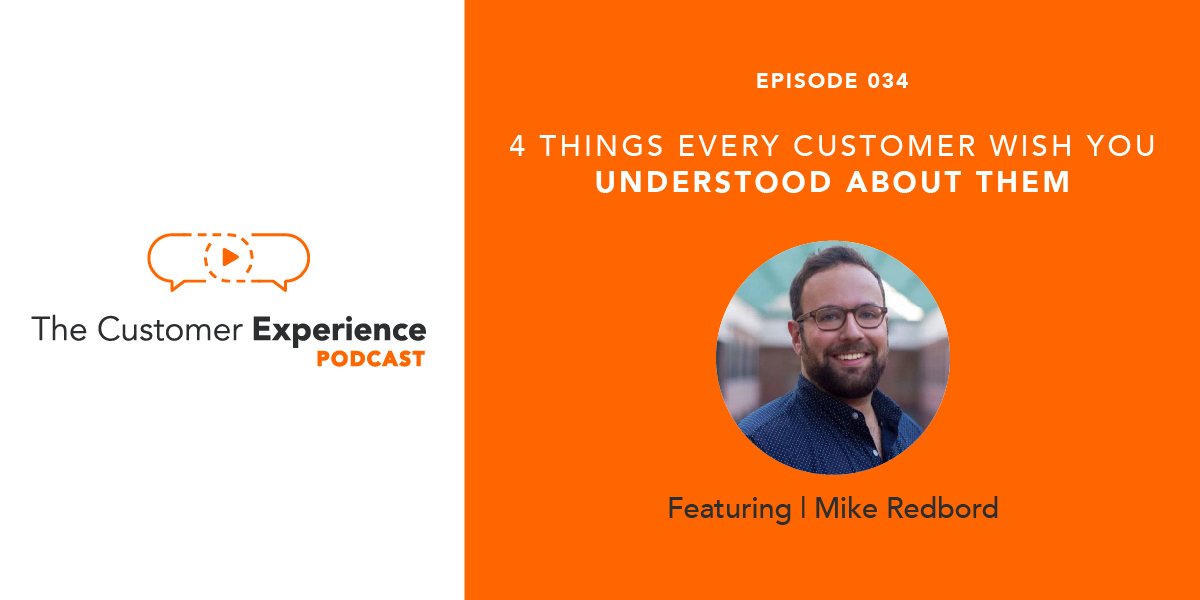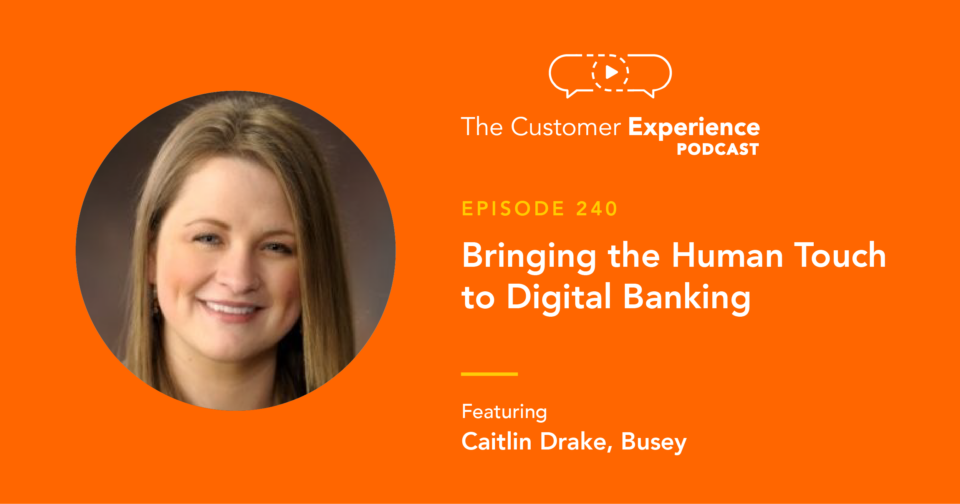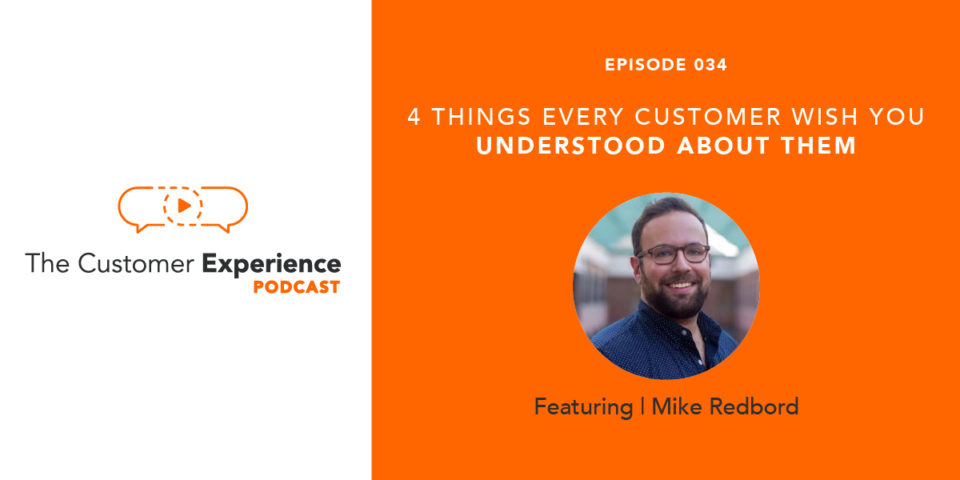
Apple Podcasts | Google Podcasts | Stitcher | Spotify
Don’t you wish you were able to understand and predict what your customers specifically need and want from you? Not just in terms of the products, features, or benefits that come with doing business with you, but also in terms of the whole experience.
No one can promise all those answers here, least of all me. But I think our guest on this episode can walk us closer to this understanding by providing us with some valuable insights developed over the past decade with a smart, scaling company.
Today I have the pleasure of introducing a guest who offers a lot to the sales, marketing, and customer success communities by shaping how we understand our customers. Currently serving as the General Manager of Service Hub, HubSpot‘s new all-in-one customer service software, Mike Redbord has spent the past nine and a half years helping customers find success with HubSpot software. VP, Global, Services, Success, Adoption, Support, and – of course – Customer are all words he’s had in his titles over that time.
Mike acknowledges that a lot of what happens to create an experience sits on a whiteboard in an operational sense. For him, the customer experience is each person’s reality – the little things that culminate into their thoughts, feelings, and stories about your brand.
He explains in this short video …
If you can understand a customer’s impression of your company, you can turn it into something useful. If it’s positive, you can find out why and apply that experience to more of your audience. If it’s negative, you’ll be able to better approach similar situations and offer a better experience to them and future customers.
Listen to the full conversation in your favorite podcast player or right here in this post, which also gives you tips and clips as Mike as I discuss topics like:
- Changing customer experience from function to feeling
- Owning bad experiences
- Unlocking the value of social proof
- Recording videos to humanize your service
- Finding a way to cross the “trust gap”
- Doing things that don’t scale
- Offering more than just good content
- More!
4 Things Every Customer Wishes You Understood About Them
To listen to any or every episode of The Customer Experience Podcast, please subscribe in your favorite podcast player …
You’ll also find the full episode recording embedded right here in its companion blog post!
Learn with HubSpot’s Mike Redbord right here …
1. “My experience isn’t an operation. It’s a feeling.”
Customer experience is often thought to be solely a function of Customer Success, Customer Support, Customer Service, or Operations. The amount of value or thought given to CX has grown significantly over the last decade. Now serving the customer goes beyond the old responsibilities and asks us to look at how our customers think, feel, and talk about our brands. And leaving them with good thoughts, feelings, and stories is crucial to creating a long customer life cycle.
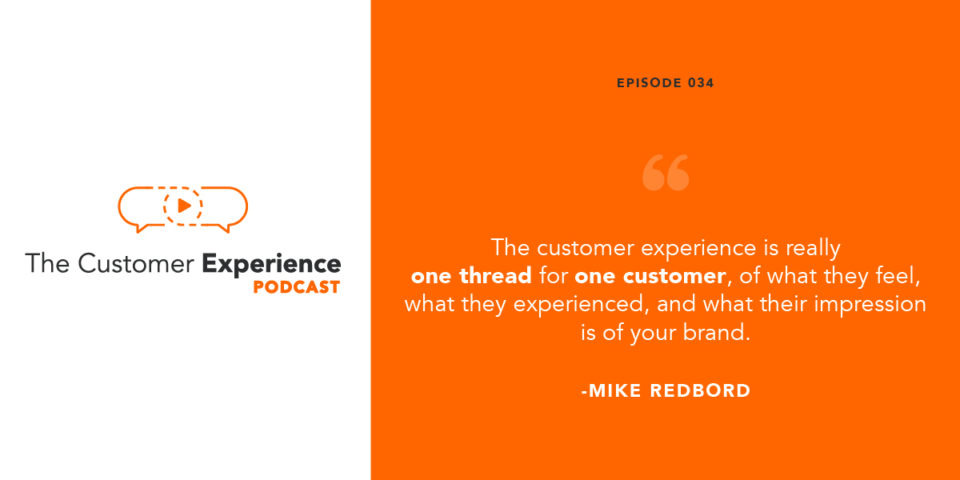
There’s a strong emphasis here on individual people having individual experiences. Even as we scale our companies, we can’t lose sight of the person behind the metric. No matter a team member’s role, title, or department, he or she must stay mindful of and empathetic toward that person.
Here are some tips for increasing sensitivity to customers, customer empathy, and creating a customer-centric culture even in a fast-growing business …
2. “I wish you believed what happened to me.”
We must take responsibility for the customer experience. In doing so, we must be honest with ourselves and honor each customer who uses our products and services. If an issue occurs, it’s easy and common to place the blame of a negative experience onto the customer, rather than onto ourselves. It’s also easy and common to simply ignore it.
As Mike mentions early in our conversation, disregarding a customer’s reality or feeling because of a fault of our own is unproductive and even foolish.
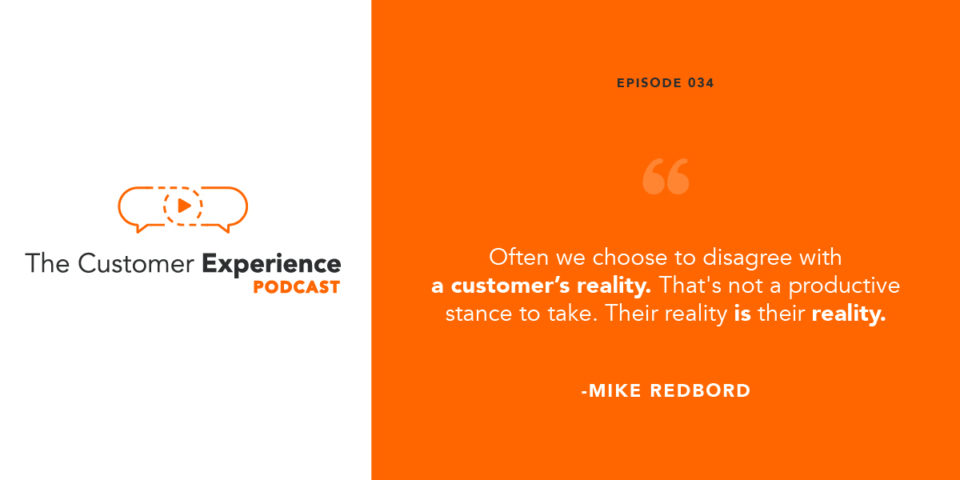
3. “I trust my friends and coworkers a lot more than I trust you.”
Peer review has quickly become a standard in customer decision making. Years ago, advertisers and marketers held much more authority in telling a customer what to believe and how to behave. Those days are long gone; the authority now belongs to our peers. Potential buyers look to friends and to previous buyers for guidance, expectation management, and more.
This shift has left many brands in the “trust gap,” as Mike explains in the following clip …
In most cases, customers become informed and educate themselves to find validation for the decisions. This shift coincides with a growing distrust from customers who’ve been burned by broken promises. And, unfortunately, the distrust goes deeper than just needing new messaging. Mike tells us that only 12% of people believe companies when they say they’re a “customer-first company.”
4. “Everyone’s a media company … big deal.”
With the wide availability of free or inexpensive production tools, easy and available distribution channels, trends toward personal branding (not just company branding), and similar, most businesses and many individuals approach the market as a “media company.” Whether that’s social posts, email campaigns, videos, infographics, blog posts, or other deliverables, we’ve all leveraged these tools to position ourselves as authorities and advisors.
Mike discusses how those media and those messages aren’t enough in the next clip …
If we’ve already lost the trust of customers through our messaging, then the media we produce is no longer enough. And if everyone’s doing it already, it’s no longer a differentiator. Mike suggests raising the standard by closing the trust gap and offering social proof (which we dive into in the next section of this post).
One Twist: VIDEO
Though it’s faster, easier, and less expensive than ever to create video, it doesn’t have to be used as part of a “media” strategy. Steve Pacinelli and I wrote the book on simple, personal videos in sales and customer success: Rehumanize Your Business.
This type of video is outside the “media company” boundaries. It’s more about building relationships and improving customer experience than it is “marketing,” “branding,” or generating awareness or demand.
Mike seems to share this view of the video-for-communication or video-for-relationships opportunity. When I asked why he advocates for video to connect and communicate with customers, here’s what he shared …
Mike explains why offering “surprise and delight” through video in a support ticket helps overcome hurdles that occur with text-based communication. This is one of our core facets at BombBomb and how we’re able to make more meaningful connections in delivering our own customer experience.
“Video as a technology is humanizing experiences in a world where we’re really hungry for human moments,” offers Mike toward the end of this episode of The Customer Experience Podcast. I couldn’t agree more.
Your Next Steps Toward Better Customer Experience
So now we know these four things our customers wish we knew:
- CX is a feeling
- Customer reality is non-negotiable
- Customers no longer seek us out for validation
- Being a media company isn’t enough
And how do we provide better service to our customers? With a social-based model of trust and authority taking shape, we have to provide forums that boost social proof for your company. Mike mentions four key ways this can be done easily and efficiently:
- Case studies
- Customer reference programs
- Reviews online through social networks
- Review sites
I was especially curious about the customer reference program, so I asked Mike to go a little deeper here. Here are two specific tips he offered:
1: Identify who your fans are:
Whether through newsletters, customer support, or even social platforms, you’ve probably connected with a few customers who love everything you offer – a “raving fan” if you will. Knowing who they are and why they feel so strongly about your brand can help you repeat those practices for new customers.
2: Consider your customer’s time investment:
When asking your customers to help you win over new prospects, consider how much you’re asking them to do. Making it easy to share content and their positive experience with your company can be a small ask that they’re happy to provide. Mike also notes that if you find yourself asking for more, consider offering an incentive such as a direct-mail reward for their efforts.
Get more context and insight on customer reference programs in this clip …
Again, the goal is to build a broad-based culture around customer empathy. This helps you create and deliver better customer experiences and, in turn, allows you to turn some of your customers into advocates of and champions for your brand.
This post is based on a conversation with Mike Redbord, General Manager of the Service Hub at HubSpot.
Get more from The Customer Experience Podcast!
Subscribe right now in Apple Podcasts,in Google Podcasts, in Spotify, or in Stitcher.
While you’re there, please leave a rating (or even a review!).
Subscribe to check out past episodes like these:
- “No, Your Customer Isn’t Always Right” with Jaime Casap (Google)
- “Does Your Sales Team Hurt Customer Success?” with Nick Hart (Outreach)
- “You Have 100 Days to Create or Lose a Customer for Life” with Joey Coleman (Never Lose a Customer Again)
Subscribe to catch upcoming guests like these:
- HubSpot sales executive and co-author of Inbound Organization Dan Tyre
- Co-founder of Wharton Interactive and co-author of The Customer Centricity Playbook Sarah Toms
- Customer experience expert Dan Gingiss
Connect and Communicate with Your Customers in a More Human Way
As mentioned earlier in this post, we literally wrote the book on video for sales and customer success – and it’s an Amazon #1 bestseller in Business Sales, Business Communication, and Customer Relations, the Porchlight Books #1 bestseller in its opening month of release, and a Barnes & Noble besteseller in its opening week of release.
It’s got examples, case studies, and proven tips to help you implement video the right way – so that your customers feel seen, heard, understood, and valued.

